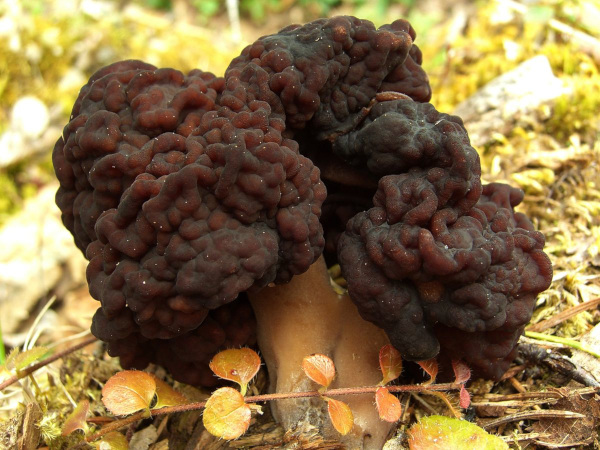(SOURCE: NCBI database)
KINGDOM: Fungi
DIVISION: Ascomycota
CLASS: Pezizomycetes
ORDER: Pezizales
FAMILY:Morchellaceae
GENUS: Morchella
SPECIES: several

One of the most famous of all mushrooms is the Morel, shown at the left. Morels are famous because they are so good to eat! If Morels grow in your area they may look different because they're highly variable and several species exist. Found in various kinds of forest, they occur nearly worldwide. The one is the picture is Morchella angusticeps.
Depressions in Morel caps are lined with microscopic, spore-producing sacs, or asci, each containing eight sexually produced ascospores. The asci are stacked very closely against one another, with only their tops exposed to the air. When the asci are mature, the ascospores are released into the air, which may carry them for very long distances.
A great deal is not understood about the Morels: how to define the various species; how Morel species can be so widespread and successful; how the species interact with the particular tree species they usually are found near; exactly how sexual reproduction is accomplished, etc.
One surprising feature about their life cycle is that it includes the production of a sclerotium, which looks a little like a dried pile of animal poop, and can be up to about 5cm (2 inches) in diameter. It's what the fungus forms to survive hard times, such as winter. In the spring, the sclerotium either produces a new mycelium or it forms the fruiting body we see and maybe eat.
 False Morel, Gyromitra esculenta; image courtesy of Jason Hollinger and Wikemedia Commons
False Morel, Gyromitra esculenta; image courtesy of Jason Hollinger and Wikemedia CommonsAs indicated at the right, there are False Morels, Gyromitra esculenta, which are not good for eating. However, they lack the deep depressions of real Morels, thus are easily distinguishable from them. Any mushroom looking more or less like our above photo, with a honeycombed cap in which the depressions are very deep, is a morel.